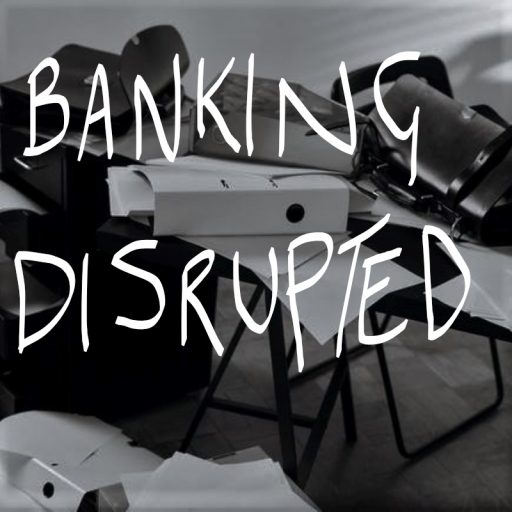There is so much being written about digital transformation across various organisations including banks and financial services players, and the key message is quite simple…not a lot is changing quick enough. With billions being spent across the globe on driving digital, improving customer experience, and modernising legacy technology estates, very few players have seen noteworthy success. The Technology Fallacy looks at potential reasons as to why delivering value from change is a challenge, particularly from the perspective of the disproportional focus on technology versus people culture.
Based on over 16,000 interviews across some of the largest organisations globally, the authors bring fresh thinking on how to develop digital DNA, which is the ability to be digital, not doing digital. The authors present several insights on how to re-pivot any digital transformation journey, or how to re-start the digital journey, as it becomes essential to long-range survival.
Big Messages/Key Quotes :
- Inertia – Even though there is so much publicised on how disruption is crippling industry heavy weights, only 11% of individuals asked said they strongly believed their company was preparing adequately. Outside of the normal factors that drive inaction, that is not understanding the change, the most common element across organisations that do not prepare for change is bandwidth. Failing to create the space to manage future business model changes at the same time as running the day-to-day business. Key to progress is to identify what the disruptions are that can affect your business, and work out what can be done to respond, and finding the right talent that can make this happen at pace
- Make the boat go faster – The speed to which market responses are developed and executed is critical in a world that moves at pace daily. There are no shortcuts to becoming more agile and responsive in the face of disruption, and solid groundwork is necessary. The main take out here is to learn from others, as they have navigated this journey already and can help prevent some of the basic errors from being made. Digital field trips that allow immersion into new ways of doing business are a vital part of the agility agenda
- Digital Maturity & Strategy – Digital is not a noun; it is an adjective as it is a way of operating. This means not following fads but aligning the business direction, people agenda and culture to what will eventually make the business mature in terms of how it operates, supported by digital technology capability. Take time out with your teams/partners/customers to sketch out what a future mature version could look like, and establish the delta between where you today and where you need to be… each journey is different, so maturity strategy is not formulaic, so leverage opportunities to leapfrog other players. This is a long-long-long term play, as digital business strategy is no different to normal business strategy
- False Affordances & Placebo Buttons – AKA the string and sticky tape fix; getting attracted to shiny tools that give the illusion (false affordance) of driving digital, which act as weak signals (placebo button) to show the notion of progress. This normally occurs, when tech is pursued for the sake of tech. Each investment needs to have a purpose, or a use case, that drives improvement. These use cases need to be tracked over time to establish if they have bought about the right result. Technology should never be accepted based on what it can do in its own right e.g. my personal view, as at today, is that blockchain is still a solution looking for a problem…
- Leadership & Learning – Same sea, different ship. There are no nuances in leadership styles that serve digital organisations better than more traditional ones. The subtle difference for leadership in the digital era is to shift focus from looking at scalable efficiency to scalable learning; and the implied leadership style here is not to have all the answers, but to be able to ask quality questions on how to move forward at pace. Hence, in addition to the traditional leadership traits, we need to add being change oriented, having transformative vision, driving innovation, talent building, influence, and collaboration into the mix. Triage your leadership team to equip them with the capabilities that are required to set direction with good judgement in fast moving markets. Lastly, it is not just about training and upskilling, there is also the requirement to create opportunities to learn and develop. Shelf-ware skills do not help anyone, if those skills cannot be applied in the real world
- Talent – as we reflect on the pace of change across the market, the same pace is also implied for how talent is nurtured and grown. Simple rule, all businesses are people businesses. Strategy here can be covered by several core approaches; be clear on your purpose to attract talent, grow talent by engaging them in a meaningful way through involvement in programmes that propel the business forward, and lastly flexible working to cater for the gig-economy. All of these have become so much more important as the post COVID world may imply a greater need for ongoing remote working. The greater responsibility for organisations here is to be aware that technology in one way or another will disrupt all jobs, and employees in these roles need to be prepared accordingly
- Environment & Organisational Agility – how to mature your organisational context and culture over time is a science, not an art. The ability for organisations to mature digitally in the right way is predominately dependent upon culture. Culture is not an unseen force, and has to be defined and tracked carefully, it is perhaps the most important KPI for any business looking to thrive. Culture literally is the oxygenated blood that courses through the veins of an organisation, fuelling its DNA. Edgar Shein at MIT has given some key pointers in elements that act as a starting point for tracking and improving organisational culture:
- Artifacts – what the outside world sees about the organisation. The look, the feel, the space, the layout, the furnishings, and the dress code
- Espoused Values – “the chatter” is probably the best way to depict this. It is what is said about the company, goals, norms, values etc
- Underlying Assumptions – what is the core purpose and belief, and what is it that gets actioned by the organisation
These can be encapsulated in assessing how digital is adopted, consistently applied and intentioned. The cultural initiatives or calibrations needed, if any, need to address all the factors highlighted above. Culture is too important to leave to chance and needs to be managed more actively than passively
- Collaboration & Fast-Fail or Succeed-Quick – if culture is the lifeblood of a company, then collaboration is the oxygen that feeds this fuel. The ability to connect, share and exchange in a fast-moving industry is key to staying ahead for just long enough to formulate a response. Conscious and active collaboration is a core design feature of successful and maturing digital organisations. The ideology of building a collective organisational brain is powerful, as often it takes a whole village to get a job done. So being more deliberate about collaboration, creating the opportunity, as well as using the right platform, is a necessary modus operandi. One fast way of moving the collaboration process along, is shifting email communication to the collaboration platform as it allows for wider debate and ideation. This also allows for fast-fail or succeed-quick strategies to be executed. As is the case with innovation dependent businesses, using collaboration to ideate and scale ideas quickly allows for a greater test and learn culture. This way of working also makes it far easier to collaborate and iterate with customers, before risking the launch of a perfect product which tanks. The active feedback loop is a key enabler for great product design and customer experience.
Getting started on this journey should not be complex. Take your time and assess where you are with honesty, establish how mature the organisation needs to become, and create the plan to get there by using the steps above to achieve the desired outcome. Also, there is no end to this journey, as the last phase of evolution is staying in a growth mindset, geared towards scalable learning and fast paced execution. All of this with a backdrop of a culture that works for all engaged in the process of driving the business forward.
Why read this book?
If digital transformation were easy, we would be living in a vastly different world to the one we have now as one thing is missed… thinking of technology as a pseudonym for innovation is the purest fallacy there is in the world of change today. Technology for the sake of technology never drove any meaningful transformation of anything. Anyone who needs some signposting on how to drive their digital transformation, not just getting newer tech, needs to read this, irrespective of level. View this as a workbook, full of insights, questions, case studies and data that can really help to create momentum and focus. A vital read for anyone involved in digital change and transformation today…read this and be part of the cure, and not the problem…




